The Center for Amazon Community Ecology is working with native artisans from the Peruvian Amazon to develop and market innovative handicrafts to increase their livelihood and support health, education and forest conservation in their communities. Most of these crafts are woven with the fibers of chambira palm trees – most are dyed with plants the artisans collect from their backyard gardens, farm fields, or forest. Native artisans in the Ampiyacu River region commonly use leaves from a vine species of Arrabidaea in the family Bignoniaceae. Bora and Murui artisans usually call this plant “sisa,” “cudi,” or “cudi-i’.” Leaves are mashed and boiled with bleached fibers of chambira to dye it a dark red. Red fibers can also be mixed with clay rich mud to darken the fiber to maroon or near black. These photos taken in the Bora village of Brillo Nuevo show plants in different conditions and stages of processing.
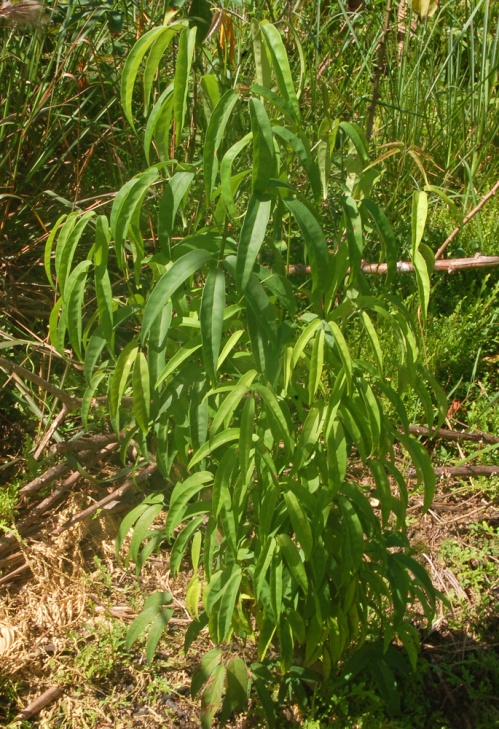
Sisa (Arrabidaea spp.) dye plant growing in artisan field (2). Photo by Campbell Plowden/Center for Amazon Community Ecology

Sisa (Arrabidaea spp.) dye plant growing in artisan field (3). Photo by Campbell Plowden/Center for Amazon Community Ecology
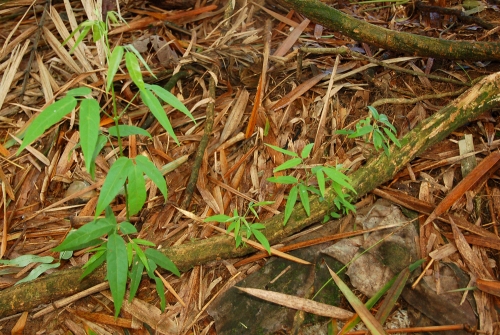
Sisa (Arribidaea spp.) leaves on vine on ground. Photo by Campbell Plowden/Center for Amazon Community Ecology
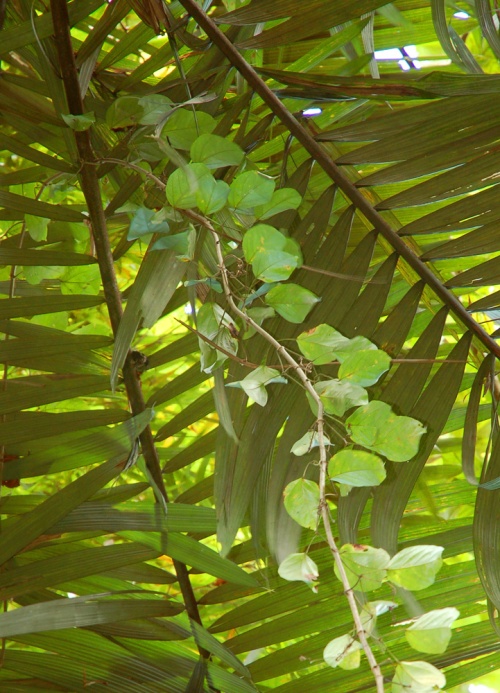
Sisa (Arribidaea spp.) vine growing up tree. Photo by Campbell Plowden/Center for Amazon Community Ecology

Bora artisan planting sisa (Arrabidaea spp.) leaves. Photo by Campbell Plowden/Center for Amazon Community Ecology

Murui artisan harvesting sisa (Arrabidaea spp.) leaves. Photo by Campbell Plowden/Center for Amazon Community Ecology
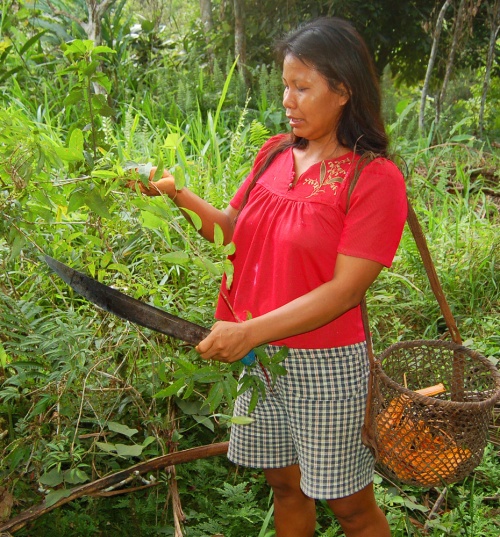
Bora artisan harvesting sisa (Arrabidaea spp.) leaves. Photo by Campbell Plowden/Center for Amazon Community Ecology

Mashing sisa (Arrabidaea spp.) leaves with wooden pestle. Photo by Campbell Plowden/Center for Amazon Community Ecology

Mashing sisa (Arrabidaea spp.) leaves in a cooking pot. Photo by Campbell Plowden/Center for Amazon Community Ecology
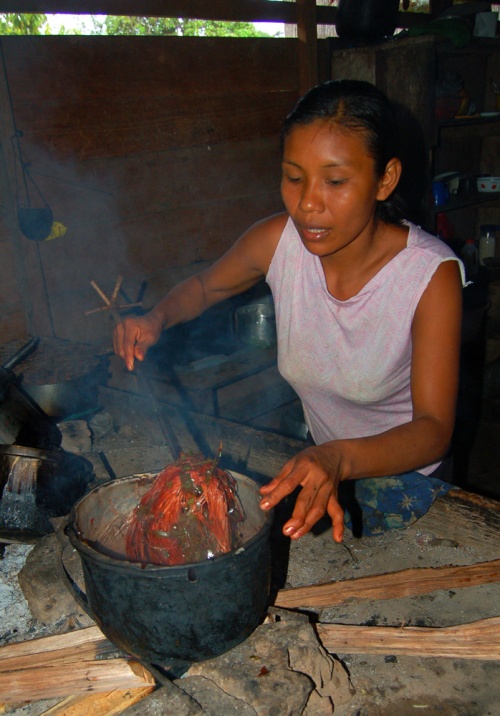
Bora artisan cooking chambira with sisa (Arrabidaea spp.) leaves (2). Photo by Campbell Plowden/Center for Amazon Community Ecology

Bora artisan cooking chambira with sisa (Arrabidaea spp.) leaves (3). Photo by Campbell Plowden/Center for Amazon Community Ecology

Sisa (Arrabidaea spp.) leaves and sisa dye chambira fiber. Photo by Campbell Plowden/Center for Amazon Community Ecology

Bora artisan dying chambira with sisa (Arribidaeae spp.). Photo by Campbell Plowden/Center for Amazon Community Ecology
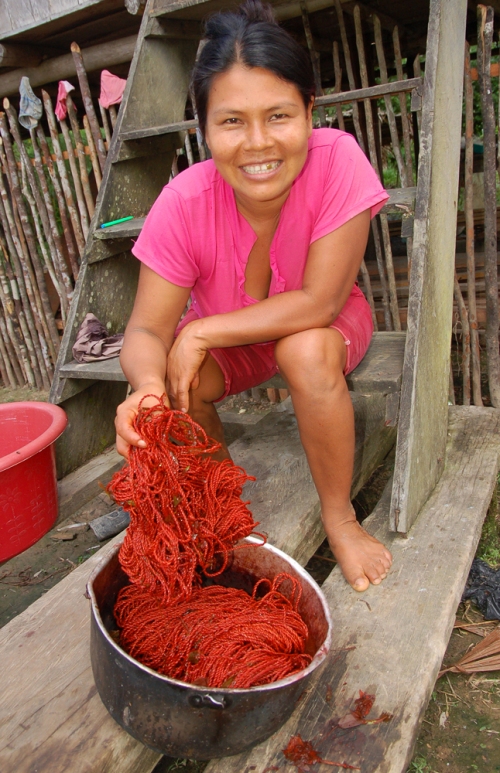
Bora artisan dyeing chambira with sisa (Arrabidaea spp.) leaves. Photo by Campbell Plowden/Center for Amazon Community Ecology

Bora artisan hanging chambira fibers dyed with sisa (Arribidaeae spp.). Photo by Campbell Plowden/Center for Amazon Community Ecology
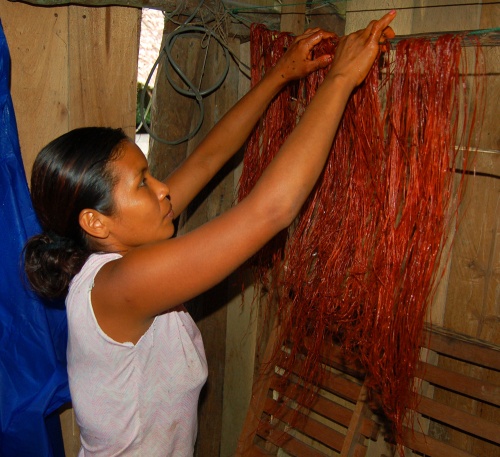
Bora artisan hanging chambira fibers dyed with sisa (Arribidaeae spp.)(2). Photo by Campbell Plowden/Center for Amazon Community Ecology
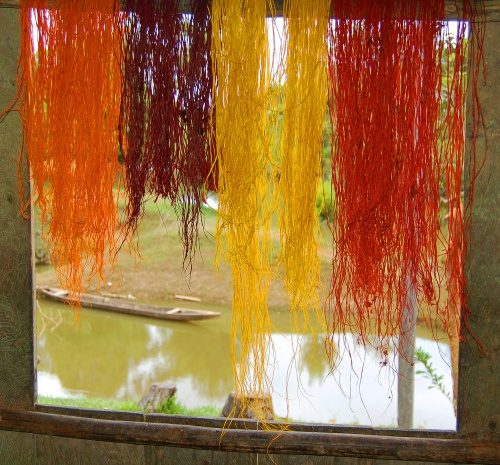
Chambira dyed with achiote, sisa (Arrabidaea spp.) and guisador. Photo by Campbell Plowden/Center for Amazon Community Ecology

Comments will be approved before showing up.


